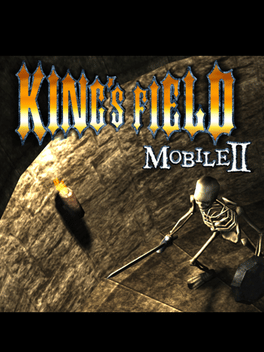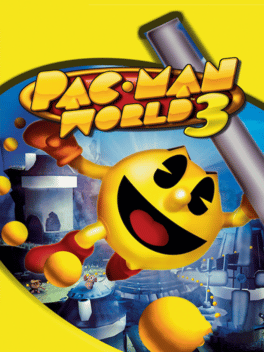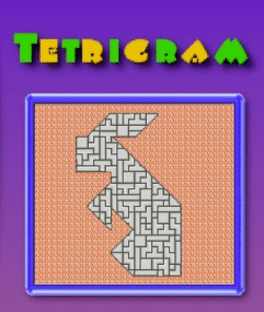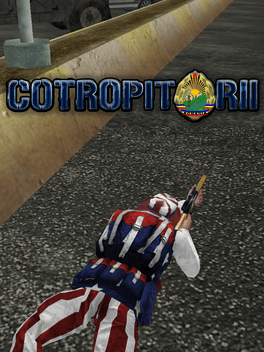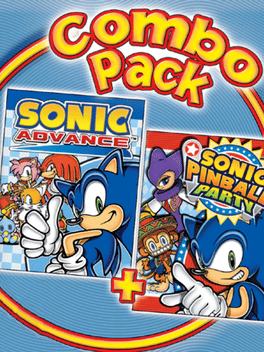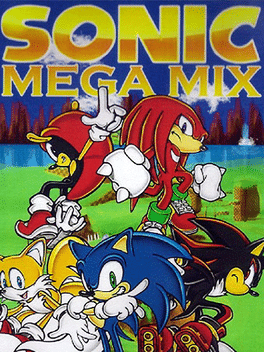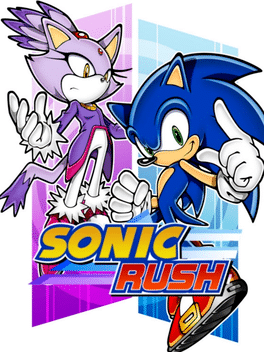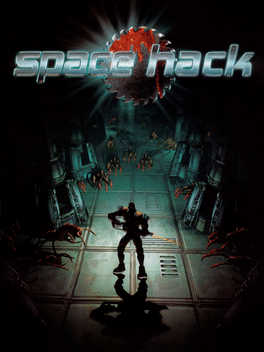New Games - Page 10351
-
King's Field Mobile II
2005
King's Field II is an action RPG where the players explore not only dark labyrinths but also fields, sea shores, ice caves, huge beetles' nests, battle arenas, temples, etc. Magic spells expand the tactics. Useful functions like lock-on and auto-mapping make the gameplay more comfortable. King's Field Mobile II is the third and final King's Field game for mobile phones. -
Pac-Man World 3
2005
-
Need for Speed: Most Wanted
2005
star 8.2The player arrives in Rockport City, driving a racing version of the BMW M3 GTR (E46). Following Mia Townsend (played by Josie Maran), the player proves his driving prowess as he is pursued by a veteran police officer named Sergeant Cross (played by Dean McKenzie), who vows to take down the player and end street racing in Rockport. Races seem to be in the player's favor until a particular group of racers, led by the game's antagonist, Clarence "Razor" Callahan (played by Derek Hamilton), sabotages and win the player's car in a race. -
Need for Speed: Most Wanted
2005
Game Boy Advance port of Need for Speed: Most Wanted offers a scaled-down yet distinct take on the iconic street racing title. It features a mix of circuit and sprint races, and a simplified version of the main game's “Blacklist” system. -
Dudeology 1
2005
Dudeology 1
2005
Dudeology 1 - The game that tests how much of a "dude" you are. There are 20 questions in 4 categories. If you get more than 3 correct in each category, you will be rewarded! -
Tetrigram
2005
-
Colin McRae Rally 2005
2005
You get to race in locations around the world, over 60 stages in eight different countries. Battle your way towards winning the championship. You can choose from many real life car models, and tune them up to match the conditions. The game realistically simulates all road types, weather conditions, and the physics of car handling. The locations and the cars are all real. Two mobile game versions of this game were created, a N-Gage title developed by Ideaworks3D and a J2ME title developed by IOMO and published by Digital Bridges. The N-Gage version reused stages from Colin McRae Rally 2.0. -
Need for Speed: Most Wanted 5-1-0
2005
star 7.3A portable version of Need for Speed: Most Wanted, 5-1-0 pits the player against the Blacklist, where the best street racers in the city compete in races and police pursuits. -
Cotropitorii
2005
Cotropitorii
2005
Cotropitorii is a third-person multi-player action shooter game that celebrates Romanian communism. Up to 32 players can join and pick between two factions and battle it out in death-match mode with over ten different weapons. -
Combo Pack: Sonic Advance + Sonic Pinball Party
2005
Two Sonic Game Boy Advance games on one cartridge, from Sega. -
Law & Order: Criminal Intent
2005
The world of the hit television show Law & Order: Criminal Intent comes to life on the PC as players take on the role of Detective Robert Goren to investigate four all-new murder cases while taking the on the role of Detective Robert Goren. Actor Vincent D'Onofrio voices the character while you scrutinize the crime scenes, analyze evidence and interview witnesses and suspects. With beautifully rendered graphics and voices just like members of the show's cast, this thrilling 3rd person mystery adventure game will have players feeling like they've stepped into an actual episode of Law & Order: Criminal Intent. -
Kid Paddle
2005
Kid Paddle
2005
Based on a famous comics series. Kid Paddle is a young gamer, and everything in his life spins around videogames. Help Kid win the Virtua3000, the latest virtual game console! Train for the tournament through 26 mini games. Play with Kid, Horace, Big Bang and the little Barbarian. Beat high scores, win clues for an online prize on Kid's website. -
Infected
2005
Infected
2005
Not your ordinary shooter, Infected lets your avatar invade your opponents' PSP systems with each of your multiplayer victories. In single-player mode, you play as Stevens, a New York City police officer with immunity to a virus that's spreading across New York. Only you can stop the virus from spreading by shooting infected individuals with a special "viral gun" that's loaded with bullets filled with your blood. Eliminate the virus in single-player mode, or use the PSP's Wi-Fi capabilities to spread your own virus in multiplayer combat. -
Sonic the Hedgehog Megamix
2005
Sonic the Hedgehog Megamix (commonly shortened to Sonic Megamix) is a work-in-progress multiperson disassembly modification of the original Sonic the Hedgehog videogame for the Sega Mega Drive / Genesis, developed by Team Megamix and more recently moved to the Sega Mega-CD. The game features the ability to play as one of five different characters: Sonic the Hedgehog, Mighty the Armadillo, Shadow the Hedgehog, Miles "Tails" Prower, and Knuckles the Echidna. It is an extensive reworking of the original game, featuring new art, music, abilities, layouts, and other things. -
Sonic Rush
2005
Sonic Rush
2005
star 7.5Sonic the Hedgehog has a new partner, Blaze the Cat, in this fast-paced platformer, Sonic Rush. You can play as either Sonic or Blaze as you try to track down powerful Sol emeralds. Sonic Rush displays the level over both screens, allowing for screen-spanning jumps and dives. Some gameplay modes include stylus support as well. Designed as a 2.5D side-scroller, Sonic Rush is the first game in the Sonic series to explore both 2D and 3D venues by combining two-dimensional environments with three-dimensional models. In 2007, the game received a sequel, Sonic Rush Adventure. -
Space Hack
2005
Space Hack
2005
star 5.7The colony ship, Maximus XV was on course. This was supposed to be an uneventful trip. No one on board expected the gravitational entity. It quickly swallowed Maximus XV. -
Aeon Flux
2005
Aeon Flux
2005
star 5.6This is the 2005 release, not to be confused with the other two prior cancelled attempts at an adaptation. In order to coincide with the release of the upcoming film, developer Terminal Reality was tasked with creating a game to tie-in with the film. The team was only given ten months to finish the game, a relatively short time for a non-sequel console game (especially in 2005), as it had to be out in time for the movie's theatrical premier. Still, Terminal Reality rose to the task and managed to create a complete Æon Flux game in less than a year, due in part to the fact that the developer created much of the game using an engine they had already built for their previous title, BloodRayne 2, which cut down on development time dramatically. Nine years after the first ill-fated attempt and five years after the second, an Æon Flux game was finally completed and released to the market in November 2005. -
Totally Spies!
2005
Totally Spies!
2005
Totally Spies! is an Action game, developed by Mistic Software and published by Atari, which was released in 2005. -
Winx Club
2005
Winx Club
2005
Join the Winx Club and prepare for an interactive adventure of fairies, fantasy, fashion and magic! Take on the role of Bloom, a 16 year-old Earth girl, who discovers she is a magical fairy! Meet Bloom's fairy friends, Stella, Flora, Tecna and Musa and battle with them against the evil witches in this most exciting girls adventure ever! Featuring a wide range of community-based activities and collectibles, The Winx Club will whisk you away on an unforgettable adventure!

